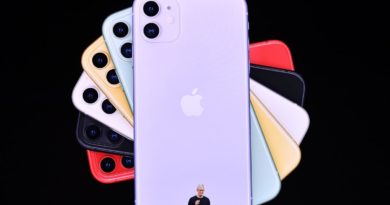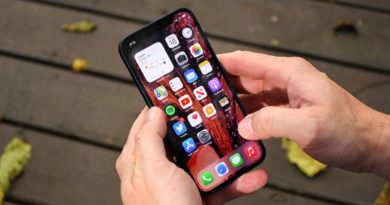Motorola Razr 2: Release date, specs, price and news
It may have been one of the most highly-anticipated phones through all of 2019, but the Motorola Razr failed to impress. But rumors suggest a Motorola Razr 2 is in the works, as the phone maker takes another stab at the foldable phone concept.
There’s certainly nowhere to go but up with the Motorola Razr 2. Peel back th charm and nostalgia with the first foldable Razr, and you were left with an overpriced fashion-first handset that didn’t even get the fashion part right. A low-res display, plastic-clad body and a foldable panel exposed the device’s innerworkings to debris and damage in a remarkable way.
So how does Motorola make a better second impression? Reportedly, the Motorola Razr 2 will offer improved specs and 5G connectivity when it arrives later this year or early in 2021. Here’s what we know so far about this foldable phone sequel.
Motorola Razr 2 release date and price
The Motorola Razr 2 could arrive as soon as September. That’s based on a suggestion from a Motorola executive — Thibault Dousson, general manager of Lenovo South Africa — who remarked as much while guesting on the podcast Reframed Tech (via Pocket-lint).
“There’s a new version coming up. There’s one in September I think,” Dousson told Reframed Tech. That’s a vague choice of words, and hardly cements the Razr 2 as a 2020 device; for example, Motorola could elect to launch the device in certain markets in September, while holding off on others. It could also delay the phone by weeks or months, as it was rumored to have done throughout most of last year with the original Razr foldable.
Given the global coronavirus pandemic, many tech companies are refraining from launching products that have long been in the pipeline, so that could certainly play a role in determining when the Razr 2 emerges as well. In fact, a mid-June tweet from Ross Young of Display Supply Chain Consultants stated that the Razr 2 will actually slip a quarter into the early part of 2021, due to COVID-19.
We hearing that the Motorola Razr 2 is delayed a quarter due to COVID-19. Not likely available until 2021.June 18, 2020
Still, Dousson’s words are a compelling hint that Motorola was at least initially eyeing a late summer or early autumn launch for its refined clamshell foldable. If the Razr 2 packs sub-6GHz 5G connectivity, as it has been rumored to do, and if it remains a Verizon exclusive, then the phone couldn’t launch before Verizon introduces its sub-6GHz network anyway.
Currently, Big Red is relying entirely on millimeter-wave infrastructure for its 5G network, which is extremely fast but travels incredibly short distances in the 35 cities where it’s available. Verizon has stated it will flip the switch on a wider-yet-slower sub-6GHz network in the second half of 2020, though the carrier hasn’t gotten more specific than that.
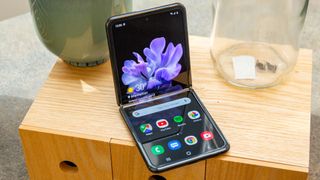
As for price, the first Razr cost $1,500 — significantly steeper than the $1,380 Samsung Galaxy Z Flip, which packs a sturdier design, better cameras, a higher-resolution display and a flagship-caliber Snapdragon 855 processor. The Motorola Razr stands as a far worse proposition that costs far more, and Motorola would be wise to lower the price of the next iteration in light of that. The question is whether or not the company realistically can.
For what it’s worth, Pocket-lint states it expects “the Razr 2 to sit around the same ballpark” in terms of price as the existing model, because the design is believed to be largely similar. However, we’ve heard no reports to corroborate those suspicions — meaning we’ll all just have to wait and see.
Interestingly, in mid-June, Motorola slashed 33% off the price of the original Razr, bringing it down $500 to $999. This is likely a strategy to head off Samsung’s upcoming foldables, like the Galaxy Fold 2 and $1,449 Galaxy Z Flip 5G. However, it could inform the price range Motorola is targeting for the Razr’s successor.
Motorola Razr 2 specs and 5G
Many of the details surrounding the hardware of the Motorola Razr 2 comes from XDA Developers, which shared some details it gathered from an anonymous source back in May.
Perhaps the most relevant spec regarding the Razr 2 in XDA’s report is that the foldable will support sub-6GHz 5G networks. Millmeter-wave 5G is likely out of the question due to space and power constraints, but even so, any 5G support at all strongly indicates the Razr 2 would have to be powered by Qualcomm’s Snapdragon 765 system-on-chip.
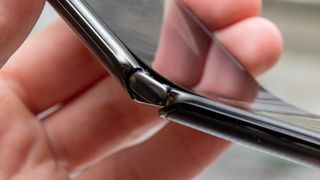
Outside of the Snapdragon 865 series for flagship handsets, the 765, 765G and 768 are Qualcomm’s other 5G processors designed to bring 5G connectivity to more affordable handsets. Given that the first-generation Razr incorporated a Snapdragon 710 CPU, the 765 series would make for a logical next step, while adding 5G support.
That chip is reportedly accompanied by 8GB of RAM and 256GB of non-expandable storage, according to XDA Developers. The same report sizes the Razr 2’s battery at 2,845 mAh, which, if true, would make for a sorely-needed 345 mAh bump from the outgoing model. The first Razr clocked just 6 hours and 8 minutes in Tom’s Guide’s custom web-surfing battery test over LTE, which is one of the poorest results in the past year — even worse than the 8-hour, 3-minute runtime for the Google Pixel 4, which was already bad.
Motorola Razr 2 cameras
The Razr 2 is expected to receive improved cameras on both the front and rear, based on XDA’s findings. The primary shooter will reportedly be backed by Samsung’s 48-megapixel Isocell Bright GM1 sensor, while the front-facing lens will now be able to capture 20-MP shots.
Both should make for a big step up from the 16-MP rear-facing and 5-MP selfie cameras in the first-generation Razr. However, hardware alone will only improve the Razr 2’s photography so much; Motorola needs to step up its post-processing game if it wants to cut the gap to mobile imaging leaders like Google, Apple and Samsung.
Motorola Razr 2 design
Interestingly, the design of the second-generation Razr is the aspect of the phone we know the least about. Then again, that could be because Motorola isn’t looking to depart from the original Razr’s design too dramatically with this new model. In fact, the company could utilize the very same chassis, 6.2-inch OLED display and 2.7-inch exterior Quick View panel, making most of the changes exclusive to the Razr 2 internal, rather than cosmetic.
This wouldn’t be particularly surprising, given that Motorola said it labored over the Razr’s hinge for four years, and revised the design 25 times before finalizing it. You’d imagine a year’s turnaround is too short a time to produce a radically re-imagined design, though images of a phone purported to be the Razr 2, leaked by Evan Blass, depict a design carrying a number of differences compared to the first-generation foldable.
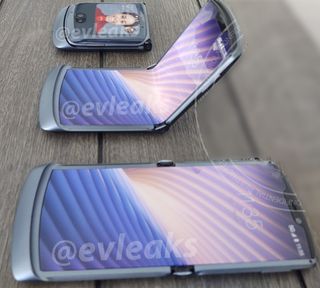
What’s most evident from this picture is that the new Razr looks to sport a smaller, smoother lip that doesn’t stick out quite as much as the original phone’s. The bezels also appear to be slightly slimmer all around, though the first Razr’s notch for the front facing camera and earpiece have still been preserved in this design. It’s unclear if what we see here is an actual unit or a render, though either way, it looks like a welcome refinement compared to Motorola’s first stab.
Whatever other enhancements Motorola may have in store — like perhaps a move to ultra-thin glass similar to what Samsung introduced on the Galaxy Z Flip — remain to be seen, and will likely be uncovered in future leaks.
Motorola Razr 2 outlook
The foldable Motorola Razr was a moderately charming stab at modernizing an iconic handset from yesteryear, but it was far too expensive to excuse its design oversights and weak performance, camera and battery life.
If Motorola is committed to delivering a successor, it needs to make the device better in just about every conceivable way. The new Razr deserves higher-quality materials, like metal and ultra-thin glass. It needs better cameras, a considerably more powerful processor, a higher-resolution display on the inside and a battery that can sustain a day of use.
Even more critically, the next Razr should do all this and yet still, somehow, be cheaper. The prospect of a $1,500 folding phone that borrowed hardware from $400 phones practically doomed Motorola’s first foldable before the first unit even shipped. If the company’s next attempt is to really take the fight to Samsung, it’ll have to wind up closer to the Galaxy Z Flip in price.
